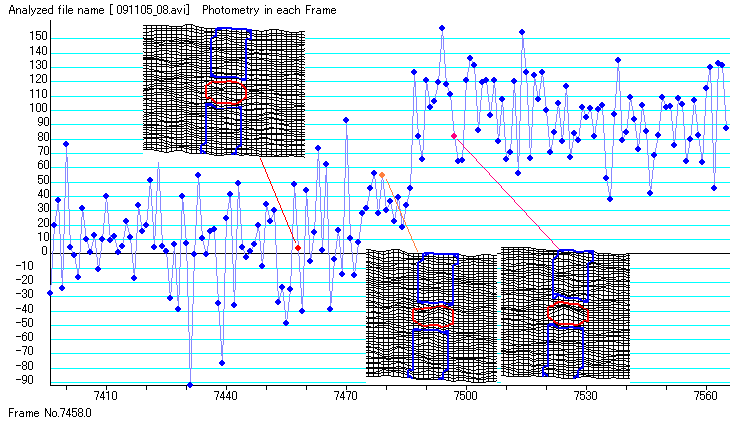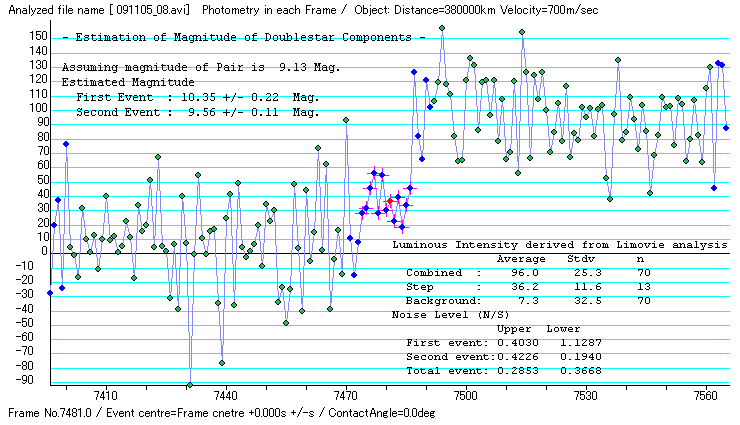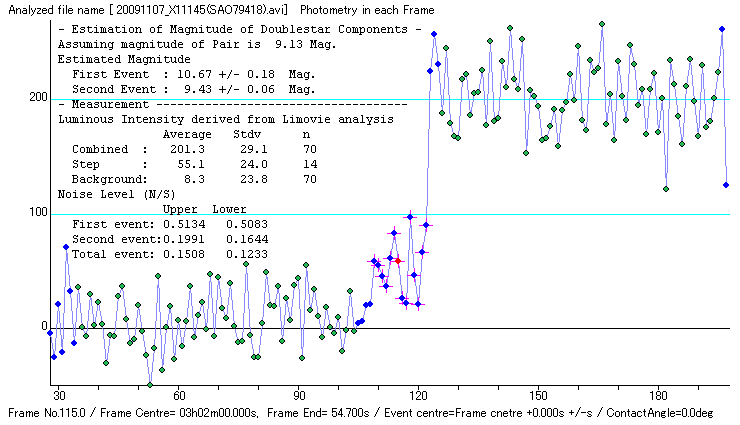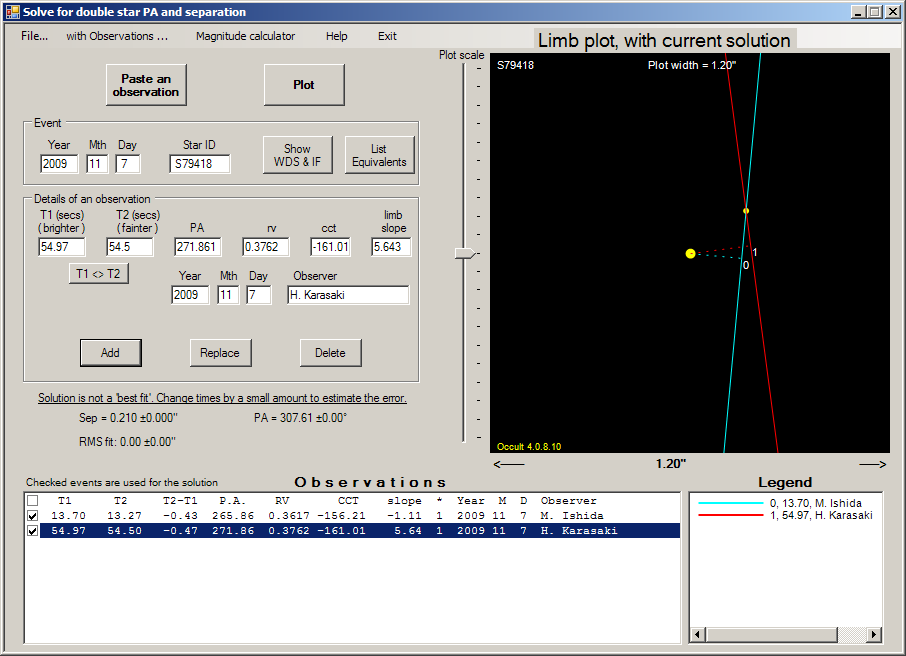A new double star SAO79418
discovered from lunar occultation in Nov 7 (UTC)
Jan. 02, 2009
Kazuhisa Miyashita
Doublestar Report to IOTA coordinator
M. Ishida's observation
2009 Nov 7 at 18h 44m
Star = S79418
Observer = M. Ishida
Telescope = 30.0cm at 135 56 33.6 35 6 22.3
Observation details
Star Mag = 9.13
Event = R D
PA = 265.864
AA = 258.570
l = 0.230
b = -0.142
RV = 0.3617
CCT = -156.21
T1 = 13.70
T2-T1 = -0.43
|
|---|
H. Karasaki's observation:
2009 Nov 7 at 18h 52m
Star = S79418
Observer = H. Karasaki
Telescope = 20.0cm at 139 40 1.2 35 44 25.3
Observation details
Star Mag = 9.13
Event = R D
PA = 271.861
AA = 264.566
l = 0.154
b = -0.114
RV = 0.3762
CCT = -161.01
T1 = 54.97
T2-T1 = -0.47
|
|---|
Light curve and Explanation
i) Ishida's observation

Figure 1. Light curve obtained from Ishida's observation
|

Figure 2. Distribution of pixel value (3D graph)
|
Ishida-san (Masayuki Ishida) sent me his November observations to analyze and confirm the reported event time.
The image of SAO79418 is very dim. So I had set the aperture to small and used rectangle
background region to reduce the noise. Filally, as a result of this analysis, a step was found
on the light curve (figure1). A small (but obvious) star can be seen on the intermediatte frames.
It is high possibility that the double star is newly discovered.
ii) Karasaki's observation

Figure 3. Light curve obtained from Karasaki's observation
|
Karasaki-san (Hideyoshi Karasaki) also observed SAO79413 and sent me his video file. The video is noisy.
so I used small (4 pixel radius) aperture and Gaussian filtre for image to reduce the background noise,
and I obtained Limovie graph which has a clear step.
It is certainly concluded that this star is new double.
Photometry
i) Ishida's observation

Figure 4. Magnitude of two components from observation.
|
/
ii) Karasaki's observation

Figure 5. Magnitude of two components from observation.
|
Magnitude of components
Combined magnitude is assumed 9.13 mag. |
Ishida Karasaki
Brighter component 9.56 +/- 0.11 9.43 +/- 0.06
Fainter component 10.35 +/- 0.22 10.67 +/- 0.18
|
|---|
From IOTA coordinator
Thank you for these two observations. It does look quite likely this is a
new double star. I have used occult to solve for the PA and separation.
It comes out to 0.21" at PA 307.6 degrees. The solution is attached as a graphic.
The close lunar PAs of the two events probably means the solution is not very reliable.
Another observation would be very useful. Occultations continue through most of 2010,
but they do not look well placed for observation.
Astrometry by Brian Loader







